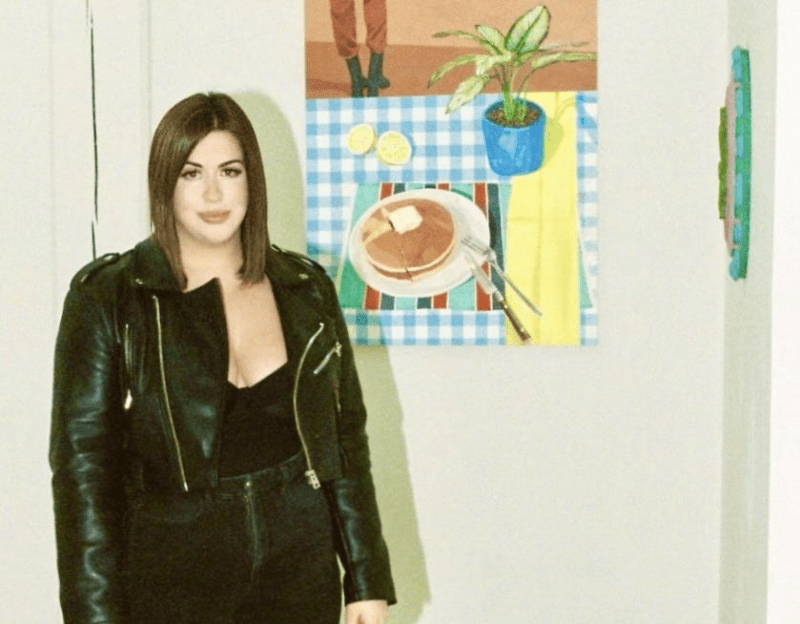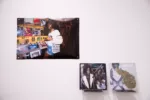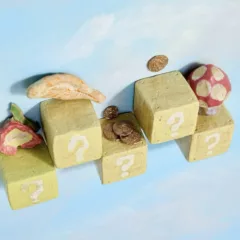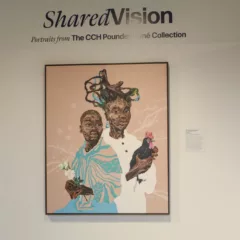Founding an organization that can make a meaningful contribution to a critical community requires a certain alchemy; a specific combination of talent, experience and vision. In the founding of Blah Blah, the city’s only commercial gallery focusing on women and non-binary artists, Megan Galardi forges a gallery from the bricks and mortar of her work experience, intelligence, commitment and courage. I had a far-ranging discussion with Megan, which has been condensed and edited for clarity and continuity.
The path to Blah Blah
As s a teenager, Megan worked as a photographer at Philadelphia concerts and music venues across the city. After high school she enrolled in Bryn Mawr College, majoring in art and math. Megan states “I always wanted to use both sides of my brain…I was creative and enjoyed art, but was also very logical and loved numbers.” Over time she wound both threads, focusing her studies on the economic impact of art communities on cities; earning a degree in City Planning through Bryn Mawr’s Growth and Structure of Cities Program.
Megan supported herself with work in hospitality; which has been key to developing her organizational and administrative talents. At the onset of Covid as that industry took a hit, Megan took a deep breath and enrolled in a Master’s program at Moore College of Art and Design. This was her second round at one of Philadelphia’s historically women’s colleges, this time earning her degree in Socially Engaged Art, with a thesis on the networking and support structure of Philadelphia’s artist-run spaces.
Finally, about a year ago, after a full time gig, and now as a contract project manager with Mural Arts Philadelphia, she made the entrepreneurial leap and opened her gallery. After spending years in the creative community; building knowledge through study and research, the time had come to commit to what for Megan remains a critical and underserved community. Megan stated that folks often ask her “Don’t you think that showing only women and non-binary artists is limiting?” Her reply… “I don’t think it’s limiting at all…I think it’s important to show the work of (this group of) artists and make women feel safe when they are navigating those spaces.”
Reflecting the values of its founder, Blah Blah, is a gallery with a clear aesthetic vision, as well as a vision of how to treat and interact with artists. Megan describes that aesthetic vision as having two layers: “I really enjoy work that is having a conversation about something while having a light-hearted aesthetic. All of our artists fit that description one way or another.” The gallery’s title embodies a similar duality. Blah Blah conveys “…both silliness and light-heartnedesness. While we’re being playful we are talking about something of substance.”
Relationship with artists
This gets at the second part of Megan’s vision…how she connects with artists. Megan wants to create relationships of trust and equity, where an artist feels they have a partner who can listen to and understand their creative concerns and challenges, and will represent them in the right way to potential viewers and collectors. “(The artists) have to know that I understand and am going to be sensitive to the conversations they are having in their work, which is often about identity and other touchy subjects. For people that are just getting started in their careers… working with another young woman can make the experience comfortable.”
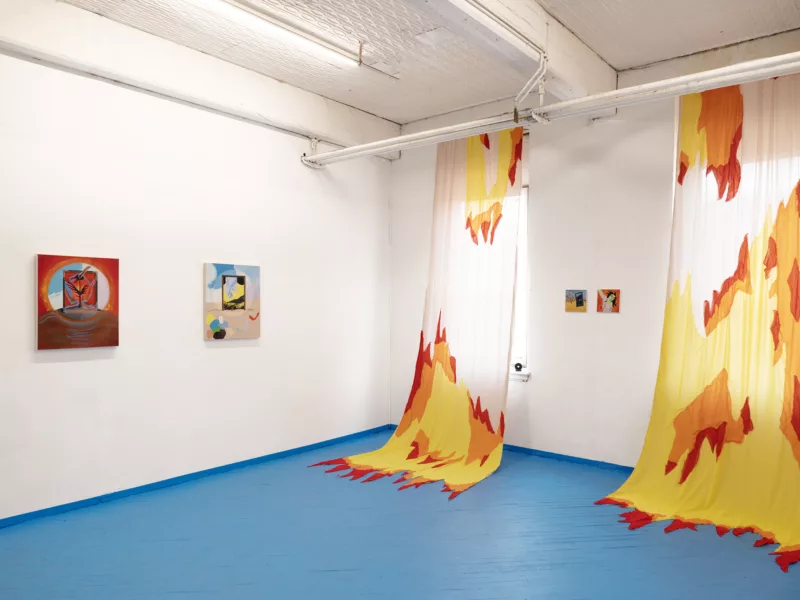
Importance of networking and cross-fertilization
Megan describes how as part of her Master’s research she found that often the difference between surviving and not surviving as a gallery in Philadelphia comes down to the networking organizations that bring together individuals and entities across the city:. “…for any of the smaller DIY institutions to survive they need to be part of a larger community (so they can) respond to and understand what other spaces are doing … how to connect to the rest of the landscape, having peers, having resources.”
Through her studies Megan understood that where we see organizations that provide an umbrella and cross-fertilization we find that the additional stimulus and connectivity makes difference. Communities will do better when the DIY collectives, writers, curators and collectors can come together to share venues, resources, information about trends, etc. rather than stay in isolation.
The gallery’s mission: Why this specific set of artists?
Megan points out that Philadelphia is unique in the depth and breadth of artist collectives, perhaps only matched by Chicago’s DIY scene. It’s also a city with a number of galleries that represent mid-career artists. However, an extremely critical niche is the galleries in between the alternative scene and the commercial galleries. “I had come to see that Philly had a lot of DIY artists run spaces and a lot of larger institutions, but there weren’t the entry level galleries. (This is) something really important. We don’t have much of a platform for artists who are on track to show here and then show in New York, LA or Miami.”
What does Blah Blah need? What does Philadelphia need to grow?
Blah Blah is in its ‘starter space’. There’s great benefit to being at 319 North 11th Street and sharing the building with artists and galleries like Vox Populi. “That’s why we chose to be where we are…to be part of a broader community. I love being in that building with its history… even though it’s not necessarily an ideal space for a commercial gallery.”
The physical proximity creates networking and fertilization. However, it’s not always prime for getting work in front of a broader viewing public or collectors. That’s a different kind of space…perhaps one in Megan and Blah Blah’s future.
What does Philadelphia need? More than anything Megan believes the city of Philadelphia would be smart to provide grass roots funding to support individual artists. “(If we had the funding) I would create a budget for individual artists like what NYFA (New York Foundation for the Arts) does in New York. They provide grants for individual artists. Philly is one of the only major cities with no funding for individual artists.”
It’s only when city government understands the transformative role of the arts that we see that kind of financial commitment to nurturing the community of creators. This is a transformation that we’ve seen in places like Soho, Tribeca or Chelsea in New York; one that gives a city a national, even international identity and makes it a destination for culture and commerce.
[Ed. note: NYFA’s total revenue in FY 2022 was $30.6 Million. NYFA is supported by funds from the City and State, which in 2022 totaled $19 Million. By comparison, The Philadelphia Cultural Fund — which only funds organizations — had to “hard” lobby its way to $2.5 Million last year, and while there was some direct-to-artists city grant money during Covid, the amounts were small totaling thousands of dollars, not millions – and that program is done now. The state of Pennsylvania gives small grants to organizations. Traditionally, neither City nor State give money to artists directly.]
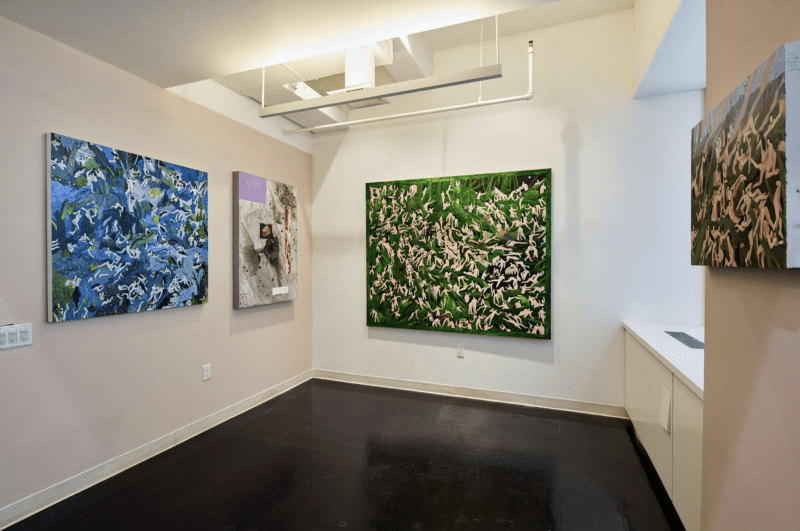
Author’s Conclusion
What impressed me most deeply about Megan, aside from her curatorial vision, is a rare combination of deep understanding of her milieu and market, the clarity of her strategic and tactical thinking, a pragmatic mind-set plus the courage to act and commit. She’s seen and is acting upon strengthening that tier of galleries that cultivate early-career talent. Beyond this, she’s clear-eyed about what emerging women and non-binary artists need if they’re going to develop a national or even international audience. In an assertive move for a new gallery she participated in last Fall’s SPRING / BREAK art fair in New York. Megan has also just announced the gallery’s participation in this coming Spring’s Future Fair https://futurefairs.com/ , also in New York. Megan knows that despite their challenges “Fairs are worth it. It’s what gets you connected with the collectors, the other galleries, it’s what keeps you up with what’s going on.”
Read Corey Qureshi’s 2023 review of Libby Rosa’s exhibit, Seeing Red, at Blah Blah gallery.
Blah Blah, 319 North 11th Street, Unit 2A, Philadelphia, PA 19107. Open Saturdays and Sundays 2-6pm or by appointment. Wheelchair accessible.


